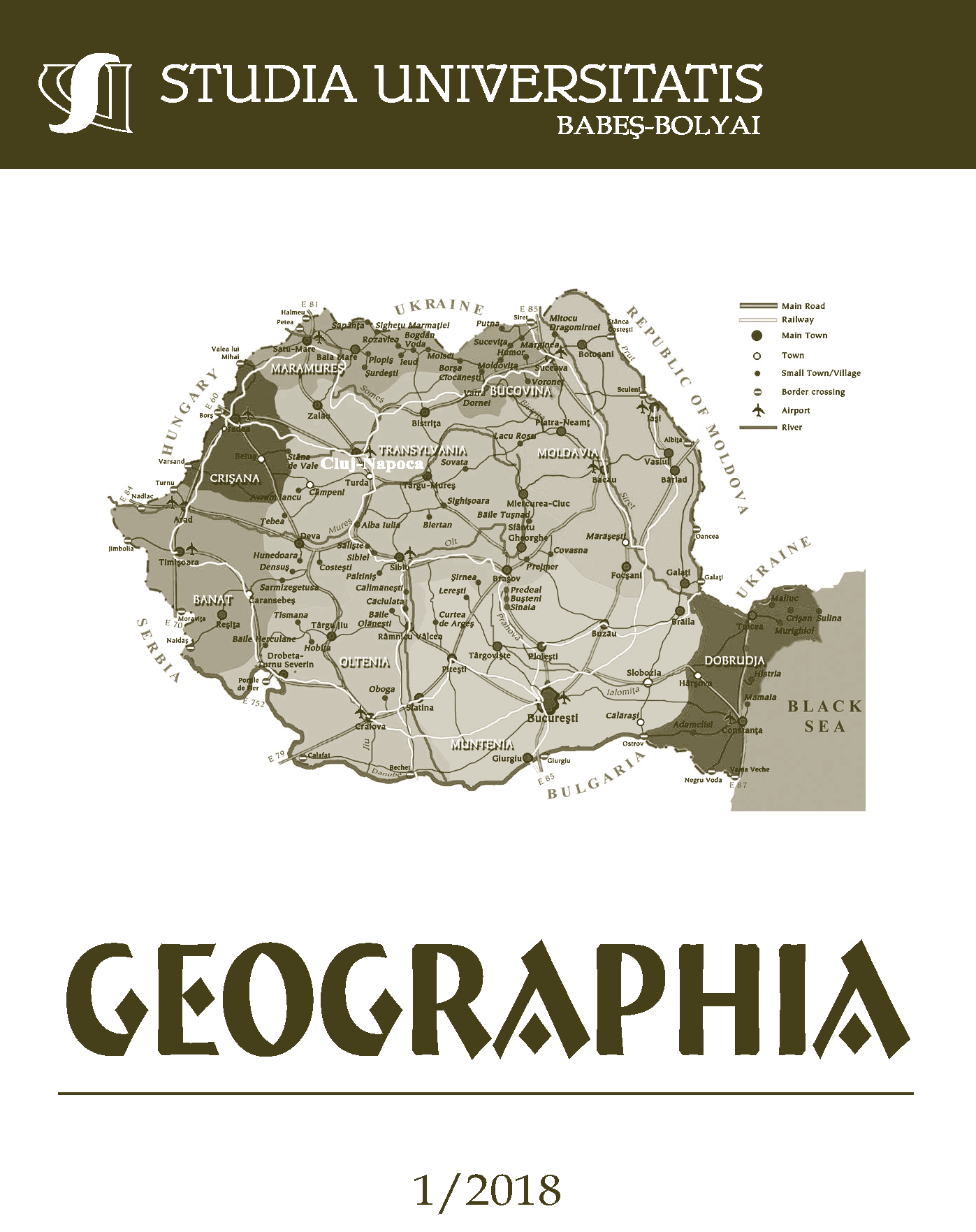EXOKARST PROCESSES AND FORMS AND AGRICULTURAL ARRANGEMENTS IN PLOPIȘ MOUNTAINS
DOI:
https://doi.org/10.24193/subbgeogr.2018.1.01Keywords:
strike-slip type tectonics, homoclinal structures, lithological synthesis, endokarst and exokarst processes, ecological reconversion, forest and pastoral arrangements.Abstract
The crystalline basement of Silvania Mountains and in particular of the Plopiş Mountains was brought to surface due to a “strike-slip type” tectonics (I. Balintoni, C. Balica, 2013) in the shape of homoclinal structures deposited in the Tertiary sedimentary cover of the Apusenides. Plopiş Mountains are a real lithological synthesis, because their structure consists of magmatic, metamorphic and sedimentary rocks and they represent an integration, cooperation and interaction between inorganic minerals and organic minerals. Plopiş Mountains cover the largest part of Silvania Mountains. The dominant note of the landscape in Plopiş Mountains is the high degree of erosion as a result of the close connection between rock type and the landscape imposed by the Tertiary dynamics of the Tisia-Dacia microplate. Therefore, the rock type is a key factor in the characterization of landforms. The lytotypes related to Plopiş Mountains conditioned the development of the karst landscape, which, according to endokarst and exokarst processes, created favorable conditions for the development of edaphic and biogeographic resources as the basis for agricultural, forest and pastoral arrangements in Plopiș Mountains.
References
Balintoni, I., Balica, C. (2013), Carpathian peri-Gondwanan terranes in the East Carpathians (Romania): A testimony of an Ordovician, North-African orogeny. Gondwana Res. 23, 3, 1053—1070.
Bârliba, C. (2011), Cartografierea pajiștilor pe trepte de relief, Edit. Eurobit, Timișoara.
Bleahu, M. (1980), Relieful carstic, Edit. Albatros, Bucureşti.
Clichici, O. (1973), Stratigrafia neogenului din estul Bazinului Șimleu, Edit. Academiei România, București.
Cristea, M.D. (2006), Biodiversitate, Edit. Ceres, București.
Irimuş, I. A. (2003), Geografia fizică a României, Edit. Casa Cărţii de Ştiinţă, Cluj-Napoca.
Irimuş, I.A, Bogdan, C. (2017), Tectonic and structural relationship in Silvania Mountains, Studia UBB, Seria Geographia, no. 1, Cluj-Napoca.
Josan, I. (2009), Ţara Silvaniei, studiu de geografie regională, p.7-96, 195-228, Edit. Universităţii din Oradea.
Lăpușan, A., Niedermaier, K. (1975), Aplicarea amendammentelor calcaroase și a îngrășămintelor pe pajiștile naturale și semănate din România, Lucr.șt. SCCP Măgurele-Brașov, vol.1.
Mac, I. (1980), Geomorfologie, curs, volumul II, Uz Intern, Litografia UBB, Cluj-Napoca.
Mac, I. (2009), Geometamorfoze tectogeomorfologice în nord-vestul României: Munţii Silvaniei, Revista de Geomorfologie, vol. 11, Bucureşti.
Mészáros, N. (1957), Fauna de moluşte a depozitelor paleogene din nord-vestul Transilvaniei, Edit. Academiei R.P.R., 174 p., Bucureşti.
Mészáros, N. (1997), Formaţiunile terţiare din judeţul Sălaj, Natura Silvaniae, 1, p. 83-96, Jibou.
Păucă, M. (1954), Neogenul din bazinele externe ale Munților Apuseni, An. Com. Geol., XXVIII, București.
XXX (1987), Geografia României, III, Carpații și Depresiunea Transilvaniei, Edit. Academiei, București.
Downloads
Published
How to Cite
Issue
Section
License
Copyright (c) 2018 Studia Universitatis Babeș-Bolyai Geographia

This work is licensed under a Creative Commons Attribution-NonCommercial-NoDerivatives 4.0 International License.





 ©Studia Universitatis Babeş-Bolyai Geographia. Published by Babeș-Bolyai University.
©Studia Universitatis Babeş-Bolyai Geographia. Published by Babeș-Bolyai University.